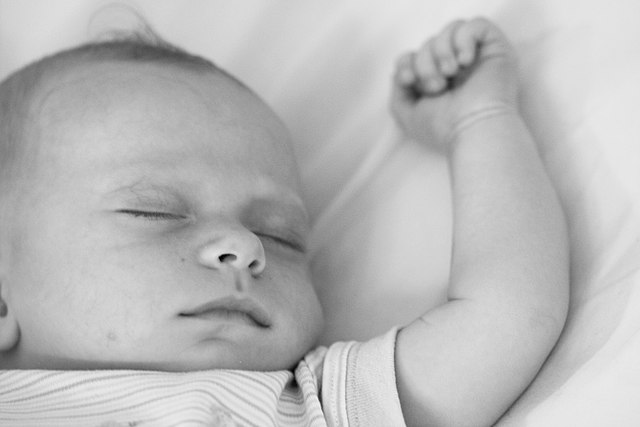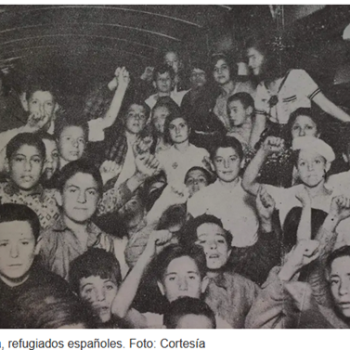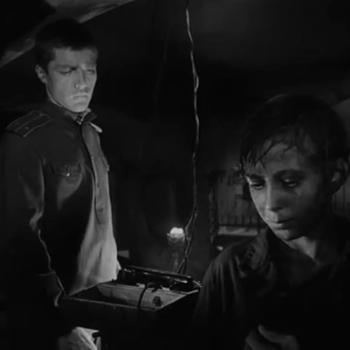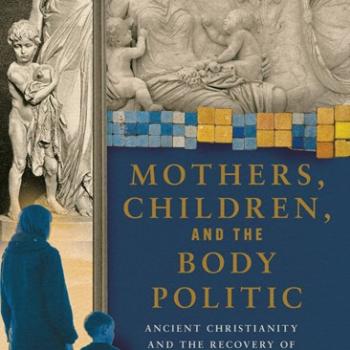This essay was originally published at Current.
This month at the Anxious Bench, a number of columnists are participating in a joint collaboration with the AACC (Asian American Christian Collaborative) to draw attention to the mournful history of gun violence in the United States. This post is part of this effort.

It is simple, they say. You pick up a kit and fingerprint your child in the comfort of your own home. Roll each little finger carefully on the card—with inkless fingerprinting for your convenience. Yes, we know, little kids get squirmy, but just make sure you get a full print. At least we splurged on the inkless option for you, did you hear? Yes, roll each finger slowly, just like this. Well done. Now gently open the DNA kit that you received with the fingerprinting kit and follow the instructions to collect your child’s DNA. With these procedures completed, you will keep these dead cells, those samples uniquely identifying vestiges of your still living child, on a special ID card. This way, if one day the unthinkable happens and a shooter invades your child’s classroom, massacring those whose only crime was attending school, the state will be able to match the samples you have, proving your child’s identity with the correct body.
What child is this?
Fingerprinting and DNA analyses have been pathbreaking for modern criminal investigations. But now in the state of Texas a new law has a different use in mind for these technologies. Instead of catching criminals, the focus in Texas is to make it easier to identify the victims of school massacres after they happen. An unspoken but now well-known truth lurks behind this proposal: These increasingly commonplace shootings involve not just the horrific and senseless deaths of children but also the merciless and messy challenge of identifying their bodies. A child’s sneakers might be all that is recognizable to the naked eye. But DNA and fingerprints, thankfully, make the identification task easier, even guaranteed.
What child is this?
You thought of your child as, well, your child. You have memories, as every parent does, of all the firsts—the moment of birth with its first cry, the first words and unsteady footsteps, and the first day of school each year, when you took that leap of faith, perhaps, and sent your child to the nearest public school to be educated. This, after all, is the modern life for so many in this country. But, you see, human bodies are frail, and children’s bodies, smaller than those of adults, are particularly so. And so, along with all those firsts, there could be lasts—the last hug, the last conversation, the last time seeing this child alive. But who wants to dwell on this? Besides, for generations now kids have been going to school. Just how dangerous could third grade get? But then, if the state is investing in these fingerprinting and DNA kits, maybe something new is afoot. So perhaps it is wise to just follow those instructions and keep that ID card on file in a kitchen drawer or your filing cabinet along with report cards. That way when those who investigate the horrific carnage come across your child’s body, they will be able to answer accurately the important question:
What child is this?
We know that in warzones children may get separated from their families without such modern technology, and reunions can be difficult to achieve. Last year Ukrainian mothers began the practice of writing contact information on their children’s bodies in case they should be separated. A toddler or early elementary-schooler after all might not be able to recite their full name, address, parents’ names, and other crucial information with ease, especially if in a state of shock. A further fear drives this practice: What if the parents are killed in yet another attack, but the child survives? The contact information on the child’s body might make it possible to locate other relatives. After all, anyone seeing the child, will be asking:
What child is this?
There is something so breathtakingly wrong with such dehumanization of children, their objectification as potential machine gun fodder, reducible to mere fingerprints and DNA samples on a card, or even as walking writing tablets. But the contrast between the American and the Ukrainian scenarios brings to the fore an important distinction: the level of control that parents have to keep their children safe. It is one thing to live in a warzone where bombing civilians has been a fact of life for the past nine months, with all the heartbreaking consequences such targeted attacks bring. Hospitals and schools have not been immune from attacks. In fact, on a number of occasions, even just in the past week, they have been deliberately targeted. By contrast, it is surely a different matter to reside in a country at peace and especially one in which so many citizens claim to be pro-life. And yet every massacre brings up this nagging question again:
What child is this?
The valuing of life has been a foundational innovation of the Judeo-Christian worldview. While the Jews and Christians believed in the preciousness of all human life because made in God’s image, those around them had no reason to value human life. It is striking to consider, indeed, that without the doctrine of imago Dei there is no clear and easily explainable justification for why every single human life is beautiful, important, and precious at every stage, age, and ability level. In fact, any alternative justification that I have ever heard ultimately draws on the doctrine of imago Dei, even as its authors attempt to claim that they do not. Without the imago Dei, Peter Singer’s completely atheistic practical ethics, which promote the killing of both sickly newborns and the elderly, make a great deal of sense.
But there are yet those among us who still wonder and sing each Christmas: What child is this? And for those who believe, this child should point us back to God’s self-sacrificial love for all his children. The story of the Incarnation—of Christ’s birth as a human baby whose fragile being required the protection and care of his earthly parents, and who had to experience outright flight to escape a massacre—should remind us that for God, every child’s life matters. As a consequence, the safety of each child in our land demands much, much more than what Texas is offering.
















